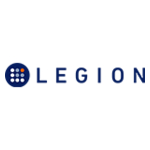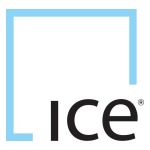The global in-vehicle payments market is projected to reach $25,918.6 million by 2031 from $4,900.0 million in 2021, growing at a CAGR of 18.15% during the forecast period 2022-2031
The recent surge in the adoption of in-vehicle payment services across developed economies and their growing global awareness is shifting automakers’ focus to equip their upcoming models with the in-vehicle payment system.
New York, Jan. 10, 2023 (GLOBE NEWSWIRE) — Reportlinker.com announces the release of the report “In-Vehicle Payments Market – A Global and Regional Analysis: Focus on Application, Product, and Country-Level Analysis – Analysis and Forecast, 2022-2031” – https://www.reportlinker.com/p06379273/?utm_source=GNW
For example, well-known automakers, including Honda, General Motors, Mercedes, and others, have already begun to offer in-vehicle payment services in recent years. This shift in original equipment manufacturer (OEM) focus toward developing in-car payment services is expected to drive growth in the in-vehicle payments market in the coming years.
Market Lifecycle Stage
The in-vehicle payment system is a payment technology-equipped automotive system.This system enables the driver to make payments or transactions with various companies or applications, including gas/charging stations, parking, toll collection, and others.
Furthermore, the system allows passengers to make purchases directly from their vehicle dashboard, saving time and making the process more convenient. As a result, the growing public demand for timely and efficient contactless transactions is driving the adoption of these services.
Impact of Global In-Vehicle Payments Market
In-vehicle payment services enable drivers to order and pay for food, coffee, gasoline, groceries, parking spaces, and tolls without leaving the vehicle.MasterCard, Visa, and PayPal, among others, are collaborating with automakers around the world to develop and integrate new payment processes and methods in vehicles.
For instance, in January 2019, Visa announced a partnership with SiriusXM to launch vehicle-based payments.Other automakers, including Volkswagen AG, Honda Motor Co.
Ltd., and Ford Motor Co., have also created in-vehicle payment solutions and platforms.
Market Segmentation:
Segmentation 1: by Vehicle Type
• Passenger Vehicles
• Commercial Vehicles
Passenger vehicles are currently credited with the highest share of the demand for in-vehicle payments.Some key factors that have enabled the technical acceptance of these vehicles are high demand, higher registration of passenger cars, and less operating difficulty as compared to commercial vehicles.
The need for passenger vehicles is growing due to the demand for heavy and luxury vehicles and an increase in the number of cars driven by diesel engines. Additionally, increased population, urbanization, and disposable income have significantly increased passenger vehicle production.
Segmentation 2: by Application Type
• Parking
• Gas/Charging Stations
• Food and Beverages
• Toll Collection
The gas/charging stations segment accounts for the largest market.A growing number of locations support the ability to pay from an app while driving.
One must enter their pump number to begin pumping or charging their vehicle.Contactless payment readers can read payment information from a compatible credit card or a digital device such as an Apple CarPlay.
The general idea behind the CarPlay update is that users can pay for gas using their car’s touchscreen instead of a credit card.
Segmentation 3: by Mode of Payment Type
• RFID
• QR Codes and e-Wallets
• Credit/Debit Cards & Apps
The credit/debit card and apps segment accounts for the largest market.Debit and credit cards are the most popular payment methods and are widely used to make in-vehicle payments.
They provide a convenient way to pay without cash or checks and are accepted almost everywhere.
Segmentation 4: by Region
• North America
• Europe
• U.K.
• China
• Asia-Pacific and Japan
• Rest-of-the-World
North America currently holds the largest share of the global in-vehicle payments market. The North America region comprises the U.S., Canada, and Mexico. The presence of technology providers, minimal miscalculations, product customization, and reduced production timescale are the primary driving factors of the North America in-vehicle payments market. The U.S. government’s policies for research and development activities regarding in-vehicle payments also hasten the region’s adoption of in-vehicle payments.
Recent Developments in the Global In-Vehicle Payments Market
• In May 2021, Hyundai made in-car payments available for its all-electric Ioniq 5 crossovers. This launch enabled the company to provide advanced payment capabilities to drivers as well as assist them in paying at the electric vehicle (EV) charging stations and restaurants.
• In January 2022, Ford Motor Company and Stripe, an online payment processor, signed Ford Motor Company as a customer in a five-year deal designed to strengthen the automotive giant’s e-commerce strategy. Ford Motor Credit Company, the automaker’s financial services arm, would process digital payments in markets across North America and Europe using Stripe’s technology.
• In May 2022, General Motors announced that it would pay $2.1 billion for SoftBank’s equity stake in its majority-owned driverless vehicle company, which is expected to boost the in-vehicle payments market.
• In September 2021, Honda Motor Co., Ltd. and Google announced their partnership in which the two companies had agreed to integrate Google’s in-vehicle connected service into an all-new model that would go for sale in North America by the end of 2022, boosting the global in-vehicle payments market.
Demand – Drivers and Limitations
Following are the drivers for the global in-vehicle payments market:
• Increased Demand for Contactless Payment Solutions
• Growing Demand for Connected Vehicles
• Increase in Production of Autonomous Vehicles across the Globe
Following are the challenges for the global in-vehicle payments market:
• Connectivity and Subscription Complexity
• Risk of Cyber Attacks
How can this report add value to end users?
Product/Innovation Strategy: The product segment helps the readers understand the different types of in-vehicle payments. Also, the study provides the readers with a detailed understanding of the global in-vehicle payments market based on application and product.
Growth/Marketing Strategy: To improve the capabilities of their product offerings, players in the global in-vehicle payments market are developing unique products.The readers will be able to comprehend the revenue-generating tactics used by players in the global in-vehicle payments market by looking at the growth/marketing strategies.
Other market participants’ tactics, such as go-to-market plans, will also assist readers in making strategic judgments.
Competitive Strategy: Players in the global in-vehicle payments market analyzed and profiled in the study include vehicle manufacturers that capture the maximum share of the market.Moreover, a detailed competitive benchmarking of the players operating in the global in-vehicle payments market has been done to help the readers understand how players compete against each other, presenting a clear market landscape.
Additionally, comprehensive competitive strategies such as partnerships, agreements, collaborations, and mergers and acquisitions are expected to aid the readers in understanding the untapped revenue pockets in the market.
Key Market Players and Competition Synopsis
The companies that are profiled have been selected based on inputs gathered from primary experts and analyzing company coverage, product portfolio, and market penetration.
Key Companies Profiled
Tier 1 Companies: Automotive OEMs
• BMW Group
• Ford Motor Company
• General Motors
• Honda Motor Co., Ltd.
• Hyundai Motor Group
• Jaguar Land Rover Automotive plc
• Volkswagen AG
Tier 2 Companies: Service Providers
• Apple Inc.
• HARMAN International
• International Business Machines (IBM)
• Mastercard
• P97 Networks
• Sheeva.AI
• Shell plc
• Sirius XM Holdings Inc.
• Visa
Countries Covered
• North America
• U.S.
• Canada
• Mexico
• Europe
• Germany
• France
• Italy
• Rest-of-Europe
• U.K.
• China
• Asia-Pacific and Japan
• Japan
• South Korea
• Rest-of-Asia-Pacific
• Rest-of-the-World
Read the full report: https://www.reportlinker.com/p06379273/?utm_source=GNW
About Reportlinker
ReportLinker is an award-winning market research solution. Reportlinker finds and organizes the latest industry data so you get all the market research you need – instantly, in one place.
__________________________
CONTACT: Clare: [email protected] US: (339)-368-6001 Intl: +1 339-368-6001




































